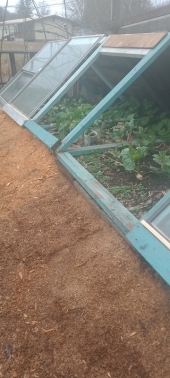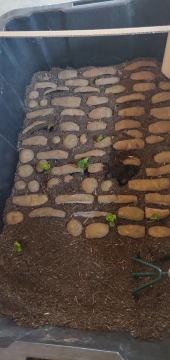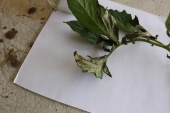Nick Kitchener wrote:https://laidbackgardener.blog/2020/04/05/determinate-and-indeterminate-potatoes/
It is always interesting to see someone go to the effort of writing a very authoritative looking blog post that is pretty much total fantasy. The author could not have actually tried growing determinate and indeterminate potatoes to arrive at these conclusions. There are virtually no important distinctions between determinate and indeterminate potatoes to the casual potato grower other than that determinate potatoes are early to mid season and indeterminate potatoes are late.
As for the original topic, there are a lot of reasons why growing potatoes through harsh conditions is not ideal. An early start is one thing, but when you make tubers that have ended their dormancy wait for months before they can put on normal growth, all kinds of wacky things can happen. What you are doing in terms of potato biology is manipulating the physiological age of the tubers, which is essentially the biochemical clock that determines how a potato plant grows from a tuber. Potatoes that are stored well, free of disease, and not held too long before planting have low physiogical age and they retain apical dominance (they form fewer stems) and grow longer before initiating tuberization. This gives you a later but larger yield of tubers. Potatoes that are stored under poor conditions, have heavy viral loads, or have to wait a long time before being given the proper conditions to grow lose their apical dominance, form lots of stems (assuming a large seed piece with many eyes), and race to tuberization, forming more but smaller tubers and lower total yields. You can game this system to some degree as you have done in this case to get plants to race out of the gate in the spring and give you an early crop, but you could largely achieve the same thing by chitting tubers so that they are ready to plant a month before your last frost. This avoids all the potential problems of growing in cold soil, including things like bacterial and fungal infections resulting from the cold sweetening of the tuber or little potato syndrome, where th plant goes into full emergency mode and just uses the energy in the tuber to form a bunch of little tubers and never makes a plant.








